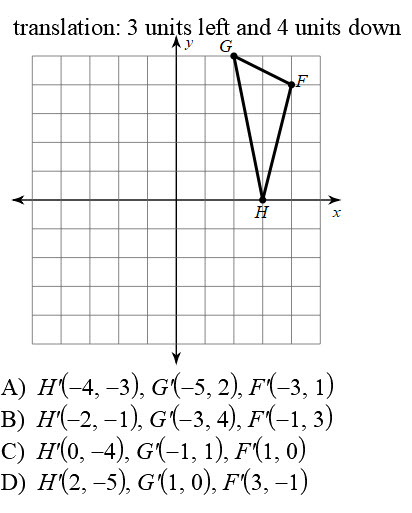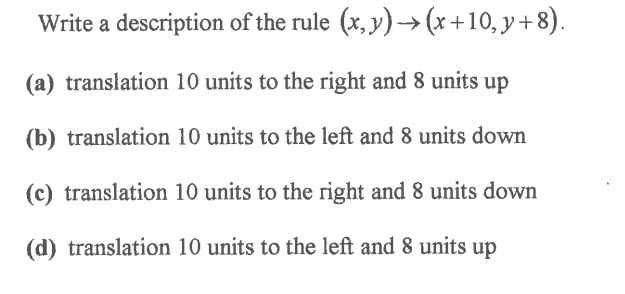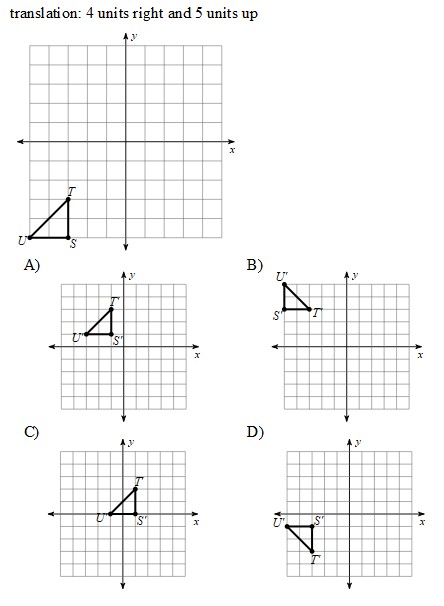Dale Copy of 8.GM.1 - Messing With Lisa Translations Only
Let's Translate Mona!
A translation is a type of transformation that can be called slides. The x-value (first number in the translation rule) moves your points left or right. It slides it left if x is negative, right if x is positive. The y-value (second number in the translation rule) moves your points up or down. It slides it up if y is positive, down if y is negative)
To work this applet...
Keep the initial point at (-3,0) and move the terminal point. You should notice the painting of Mona Lisa translates (slides) by the same translation rule (called a vector).
Note: LARGE POINTS are MOVEABLE.
Make Mona translate by a vector of (1,3). This means each point should move right 1 and up 3.
1) Where is the point (2,-4) after a translation of (+1,+3)? 2) Where is the point (5,-4) after a translation of (+1,+3)? Answer below.
Make Mona translate by a vector of (-4,2). Keep the initial point at (-3,0) and move the terminal point to (-4,2). All points should slide left 4 and up 2.
1) Where is the point (2,-4) after a translation of (-4,+2)? 2) Where is the point (5,-4) after a translation of (-4,+2)? Answer below.
Hopefully you notice a shortcut with translations. You can take each initial point of the preimage and add the x-value of the translation rule and the y-value of the translation rule to the corresponding x's and y's of each initial point to get the new po
Where would the new points be if A(2,4) B(4,1) C(-3,5) after a translation of (-2,4)? Answer below. Use A', B', and C' to indicate the new points.
Question 1:

Question 2

Question 3

Question 1 Answer _________ Question 2 Answer _________ Question 3 Answer _________ Answer below.